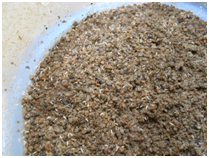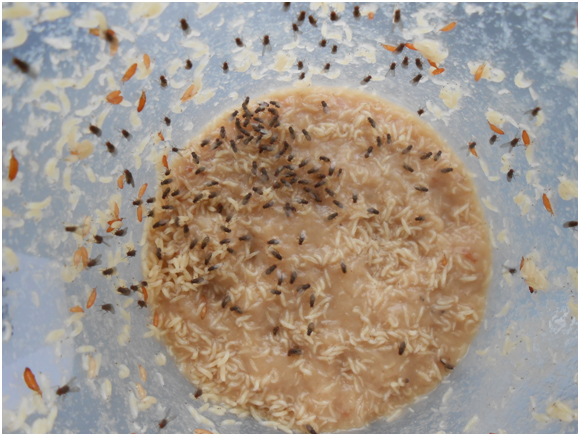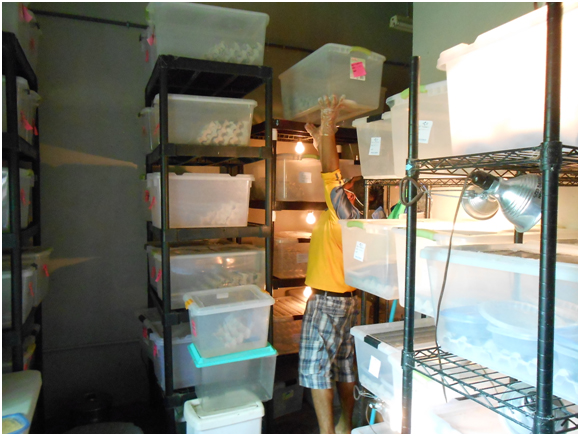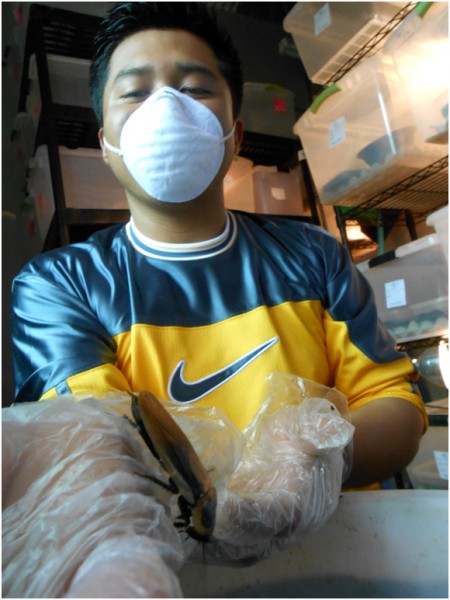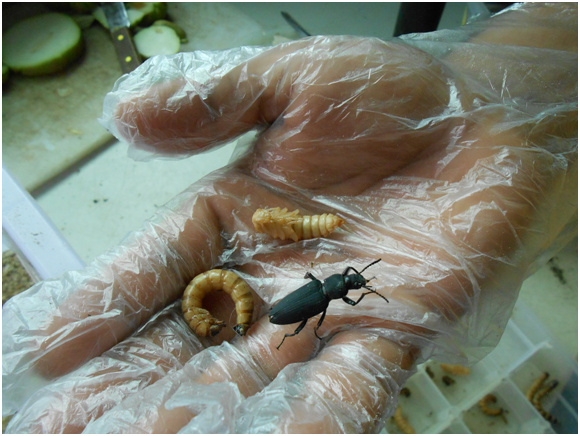Big frog, little frog, golden frog, marsupial frog, endangered frog, and common frog; what do all of those guys have in common? They all need to eat. There is no call-up home delivery in Panama, so here in El Valle at EVACC, we have had to roll up our sleeves and become invertebrate breeders (adding to an eclectic list of “other skills” needed in this particular conservation project).
The thing that most people do not think about when thinking about an amphibian conservation project is food for the animals. It would be incredibly difficult to have a successful breeding/conservation project without being able to feed the subjects at hand. At EVACC we think about insects, and other invertebrates, on a very regular basis. And we think about what they eat, in a captive setting, just as much.
What do our frogs eat? We have quite a few different species we look after, so we have quite a few invertebrates to offer to them. For the most part we delineate food items to specific species based on food size, and the mode in which the frog eats. The smallest food we have to offer is springtails, from the insect order Collembola. They go through simple metamorphosis, and the different size nymphs can be sifted and fed to different size amphibians.
Working our way up through the sizes we have the two different kinds of fruit flies; Drosophila melanogaster and Drosophila hydei. The two fruit flies at EVACC do not fly and the smaller one, D. melanogaster, does not have wings. They have both been genetically modified to possess these traits. Fruit flies, with vitamin powders, are fed alternately to our diurnal species, and to some of the nocturnal species at different stages in their life. These two species of Drosophilago go through complete metamorphosis.
Domestic crickets (Acheta domesticus) make up a large portion of the diet for many species at EVACC. This captive food colony requires quite a bit of time and space, but well worth it. This insect goes through incomplete or simple metamorphosis as well, making it a food item for the smallest of frogs to large ones, as well.
Woodlice, sow bugs, or roly-poly bugs are also on the menu at EVACC. These invertebrates are not insects, but a crustacean from the family Oniscidea. Leaf litter frogs love these calcium-packed treats.
The super worm (Zophobas morio) is a larva of a species of darkling beetle. Only the larvae are fed out to amphibians, as the adult are not preferred foods for frogs. This insect goes through complete metamorphosis.
We also have a colony of earthworms. Our colonies are not thriving at the moment, so most of the time we harvest from our own backyard. The other food item that we are currently not breeding, but do feed out, is the Neoconocephalus saturatus, a type of cone-headed katydid. We rely on a local family to help us out by collecting these katydids for us.
Last, but certainly not least, is the newest food item on the menu at EVACC; Blaberus discoidalis, a very large cockroach.
—Heidi Ross, director of El Valle Amphibian Conservation Center
(All photos courtesy of EVACC)


